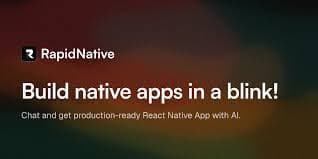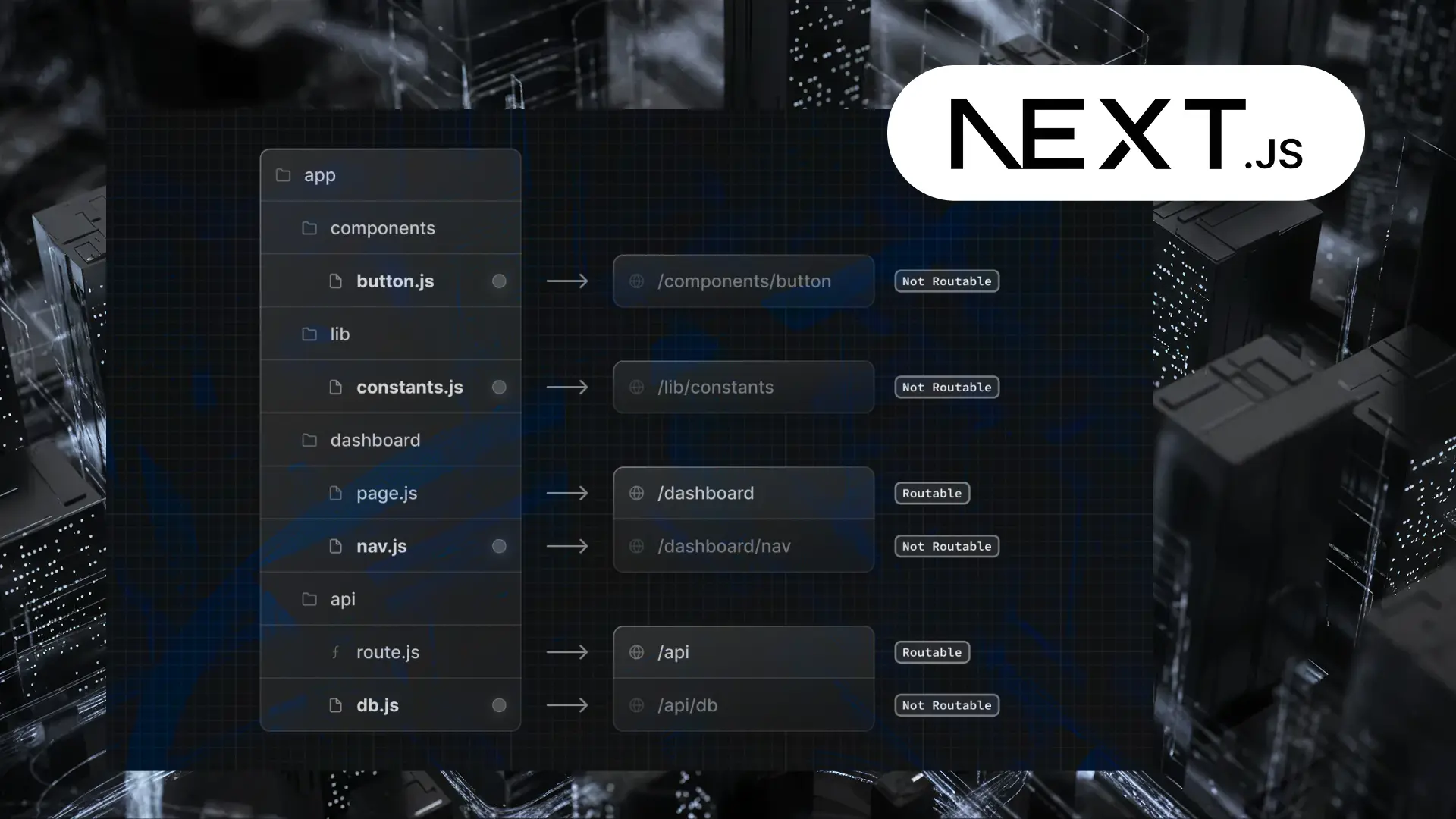Table of Contents
Estimating the Cost of Developing an AI FinTech App
Author

Subject Matter Expert

Date

Book a call
A single API can now unlock an entire digital bank.
That’s how far FinTech has come—and the momentum shows no sign of slowing down in 2025.
Globally, FinTech is entering a transformative phase fueled by artificial intelligence, embedded finance, and real-time analytics. The global market, which surpassed $305 billion in 2023, is projected to grow at a CAGR of 17% and redefine how consumers interact with money, from investing and lending to insurance and wealth management.
But nowhere is this evolution more pronounced than in the United States. With supportive regulatory frameworks like the Federal Reserve’s real-time payments system (FedNow), rising investor confidence, and aggressive innovation from both startups and legacy banks, the U.S. remains the epicenter of FinTech disruption. In fact, over 56% of global FinTech investment in 2024 flowed into the U.S. market alone, highlighting its dominance.
A key driver of this transformation? Artificial Intelligence. From personalized credit scoring to fraud detection and robo-advisors, AI has become more than an add-on—it’s now the foundation of most competitive FinTech products. As AI continues to shape the future of FinTech app development, a new question is emerging for founders, CIOs, and product heads:“How much does it cost to build an AI-powered FinTech app that can compete?”
That’s what we will unpack in this blog.

Source: Statista
Cohesion of AI/ML in FinTech
AI and ML have moved from innovation layers to core engines within modern FinTech applications development.
In the U.S., where regulatory frameworks like Dodd-Frank 1033 and initiatives like FedNow support open banking, AI adoption has accelerated across:
- Automated credit scoring
- Fraud detection
- Conversational banking
- Hyper-personalized finance tools
Over 80% of U.S. financial institutions now rely on AI for at least one critical workflow, reinforcing the country’s lead in AI-embedded financial infrastructure.
Looking ahead, the FinTech-AI intersection is moving toward:
- Predictive finance assistants
- Generative AI in financial documentation
- Self-learning investment strategies
This brings both opportunity and complexity—particularly in data governance, transparency, and compliance.
These themes were explored in-depth at our recent GeekyAnts FinTech Meetup, where industry experts shared real-world insights on AI integration in FinTech platforms.
The discussions provide firsthand insights into how CTOs, product managers, and engineers are thinking about scalability, AI deployment, and user experience in the FinTech space.
What Type of Budget Will Be Required for FinTech App Development?
The cost of developing a FinTech app in 2025, especially with AI integration, has risen due to evolving tech stacks, data infrastructure needs, and compliance overheads. Based on market analysis and recent AI-driven projects:
App Type | Estimated Cost (2025) |
Simple FinTech App | $60,000 – $100,000 |
Mid-Complexity App | $100,000 – $240,000 |
Advanced AI-Powered Platform | $240,000 – $600,000+ |
These are baseline figures, with additional costs driven by:
- Regulatory compliance requirements (e.g., KYC/AML in the U.S.)
- Integration with third-party services (e.g., Plaid, Stripe)
AI capabilities such as predictive analytics, ML scoring, or chatbots
“AI is the foundation of future-ready FinTech products. Building without intelligence today means falling behind tomorrow.”

Sanket Sahu
CTO (Innovation), GeekyAnts
This estimation will be further broken down in the next section, where we explore key cost drivers.
Key Factors Influencing AI-Integrated FinTech App Development Costs
In March 2024, a U.S.-based startup launched an AI-driven wealth management app with personalized portfolio tracking and GPT-powered financial insights. The estimated budget? Nearly $420,000—almost double what traditional MVPs would’ve cost two years ago.
Why the jump?
Because building a FinTech product in 2025 isn’t about screens and APIs anymore. It’s about data intelligence, compliance, and architecture choices that scale in a regulated environment.
Let’s break down the key factors that shape your development budge for fintech appt:

1. The Complexity of Technology Stack: AI, Blockchain, and Beyond
At the heart of modern FinTech is AI. But “AI” isn't a line item—it’s an ecosystem. The cost implications vary based on:
- Custom vs. Pre-trained AI models:
Custom models (e.g., fraud detection or credit scoring) require significant training data and compute power, increasing cost. - ML Ops and Pipeline Automation:
Deploying models into production securely with versioning, testing, and continuous learning adds infrastructure overhead. - Complementary Tech:
Apps using blockchain for secure transactions, or digital twins for simulations, further increase architecture complexity.
Example: Adding AI-driven personalization can increase app cost by 30–45%, according to Deloitte’s 2023 Tech Trends.
2. Location of Your Development Team: Cost by Geography
Your team’s location significantly shapes your project’s bottom line. With AI, security, and compliance raising the bar for engineering expertise, hourly rates have surged globally.
Region | Avg. Hourly Rate (2025) | Impact on Budget |
U.S. / Western Europe | $200 – $400/hr | High budget, fast compliance turnaround |
Eastern Europe | $80 – $180/hr | Balanced cost with strong tech talent |
South Asia (India) | $50 – $120/hr | Cost-effective, highly scalable engineering |
Many U.S.-based FinTechs now adopt a hybrid delivery model—keeping regulatory oversight and architecture design in-house, while outsourcing AI development, mobile apps, or integrations to partners in India or Eastern Europe for cost optimization and rapid delivery.
3. App Type: What You Build Determines the Bill
Fintech mobile apps category sets the baseline for complexity and cost. AI-powered FinTech platforms with real-time data, predictive models, and market-sensitive workflows—like crypto trading or wealth advisory—can easily exceed $500,000.
- Banking & Payments Apps
Include KYC, ledgering, and risk engines—requiring strong compliance and secure transaction layers. - Robo-Advisors
Demand AI/ML integration, portfolio simulations, and real-time market data handling. - Insurance & Lending Apps
Use OCR, rule engines, and credit scoring for automated document processing and eligibility decisions.
Each app type introduces distinct architectural, regulatory, and data integration needs, directly shaping your development budget.
4. Features That Go Beyond the Basics
Each AI-powered feature can increase development scope by 10–20%, depending on its complexity and integration depth.
Modern FinTech products are evolving far beyond simple KYC and transaction processing. Today’s competitive apps often include:
- AI Chatbots with Natural Language Processing (NLP)
For instance, intelligent customer support - Voice Authentication
Adds biometric security and streamlines access - Predictive Budgeting Tools
Uses AI to analyze patterns and forecast spending - Custom Dashboards
Surface's behavioral insights for both users and admins - Compliance Audit Logs & Multi-Tenant Admin Panels
Essential for scaling securely under strict regulatory frameworks
These advanced features not only enhance user experience but also demand more backend intelligence, data processing, and infrastructure, contributing directly to higher development costs.
5. Tools, Frameworks, and APIs
Choosing open-source tools like HuggingFace models or LangChain can significantly reduce AI experimentation costs, especially during MVP and prototyping phases.
The AI tools and platforms you select directly influence development speed, scalability, and budget:
- FinTech APIs like Plaid, Stripe, Galileo, FinBox, and Alloy come with varied integration complexity and licensing models.
- AI APIs such as OpenAI, Amazon Comprehend, or Google Vertex AI follow usage-based pricing—costs scale with model size, prompt frequency, and inference volume.
- Cross-platform frameworks like React Native or Flutter help reduce UI development time and cost while maintaining native performance across iOS and Android.
Tech choices impact not just upfront cost, but also long-term maintainability, performance, and vendor dependencies.
6. Development Approach: In-House vs Outsourced vs Hybrid
The development model you choose has long-term implications for cost, control, and scalability. Here's a breakdown of the three main approaches:
Approach | Advantages | Limitations | Best For |
In-House | - Full control over the product - Tight alignment with internal teams | - High fixed costs (salaries, benefits, infrastructure) - Slower to scale | Highly regulated, long-term product builds |
Outsourced | - Flexible team scaling - Faster execution | - Potential communication and security risks - Less direct oversight | MVPs or short-term builds with budget limits |
Hybrid | - Retains strategic control - Leverages external talent for dev/QA | - Requires clear coordination and management | Startups and growing firms looking to scale efficiently without losing product vision |
7. Infrastructure & Compliance Costs
Infrastructure and compliance can consume 20–30% of your total development budget for U.S. FinTech products—especially when building from the ground up.
AI-driven FinTech apps require a secure, scalable, and regulation-ready backend. Key components include:
- Data Security Protocols
Compliance with standards like SOC 2, GDPR, and PCI-DSS is non-negotiable. - Audit Trails & Consent Layers
Ensure transparency and user control over data access and sharing. - Cloud-Based DevSecOps
Integrates security into the CI/CD pipeline, enabling faster, safer deployments at scale.
These layers are essential for maintaining trust, avoiding legal exposure, and ensuring uninterrupted service across jurisdictions.
Cost Estimates by FinTech App Type and AI Integration
Building a FinTech app isn’t a flat-rate investment. It’s a layered process—every feature, compliance checkpoint, and AI model adds cost and complexity.
At GeekyAnts, we have worked with startups and enterprises across the U.S., Europe, and Asia to deliver FinTech products with and without AI integration. Based on that hands-on experience, here’s a step-by-step breakdown of what goes into developing a FinTech app in 2025—and how each decision impacts your budget.

Step 1: Discovery & Architecture Planning
- Timeline: 2–4 weeks
- Cost: $10,000 – $25,000
This foundational stage involves competitor research, technical scoping, defining AI needs, and crafting architecture that aligns with compliance requirements like PCI-DSS or GDPR.
Example: For a lending platform, we mapped out an OCR-enabled loan processing system with real-time scoring, which saved weeks in later rework.
Step 2: UI/UX Design
- Timeline: 3–5 weeks
- Cost: $15,000 – $40,000
Design must balance usability, trust, and regulatory UX (e.g., eConsent, audit logs). AI elements like chatbot flows or budget visualizers require advanced UX treatment.
Fintech Apps with highly personalized UI/UX dashboards and ML-driven charts often add +20% to design scope.
Step 3: Core Development – FinTech + AI Integration
- Timeline: 3–6 months
- Cost: $120,000 – $500,000+
This phase includes:
- FinTech Infrastructure: KYC, transaction management, risk engines
- AI Modules: Chatbots (OpenAI, Rasa), fraud detection (anomaly detection), predictive analytics
- Third-Party APIs: Plaid, Stripe, Galileo, FinBox
Example: A U.S. robo-advisory platform with AI-driven rebalancing and Plaid integration cost $280,000 over 4.5 months.
Step 4: Backend Engineering & DevSecOps
- Timeline: Parallel to core dev
- Cost: $30,000 – $100,000
Includes database design, logging systems, CI/CD pipelines, containerization, and compliance logic. AI Fintech Apps targeting the U.S. must include:
- Audit trails
- Consent management
- Encryption layers
Apps integrating SOC 2 or PCI-DSS pipelines see infra costs rise by 25–30%.
Step 5: Testing & QA Automation
- Timeline: 3–5 weeks
- Cost: $15,000 – $35,000
Includes:
- Manual + automation tests
- Model performance testing (for AI)
- Compliance validation scripts
Apps with real-time ML components need simulation testing to avoid false positives in fraud detection or scoring.
Step 6: Deployment & Maintenance Setup
- Timeline: 1–2 weeks
- Cost: $8,000 – $20,000 (initial setup)
- Ongoing Maintenance: ~$5,000 – $15,000/month
Apps are deployed on cloud platforms with DevSecOps. Post-launch maintenance includes:
- Minor feature updates
- Model retraining
- Monitoring tools
Features That Influence Cost Further
The more intelligence and flexibility you pack in, the more you’ll invest:
- AI Chatbots & NLP Assistants – $20K–$50K
- Voice Biometric Authentication – $15K–$30K
- Predictive Analytics – $25K–$60K
- Highly detailed Custom Admin Panels & Dashboards – $20K–$40K
- Multi-tenancy & Role-based Access – $15K–$25K

FinTech App Cost Summary: AI vs Non-AI
FinTech App Type | Cost Range (Non-AI) | Cost Range (With AI Integration) | Cost Drivers |
Banking & Digital Wallets | $100K – $180K | $180K – $350K | Ledgering, fraud AI, transaction engines |
Lending Platforms | $90K – $150K | $160K – $320K | Credit scoring AI, OCR, eligibility automation |
Robo-Advisors | $110K – $180K | $200K – $380K | ML models, portfolio simulation, rebalancing |
Trading Platforms | $130K – $200K | $220K – $400K+ | Real-time feeds, AI trend prediction, market insights |
InsurTech Apps | $100K – $170K | $180K – $360K | Risk analysis, claim AI, document classification |
RegTech Tools | $120K – $200K | $200K – $420K | AML automation, audit layers, real-time compliance engines |
Neobank Superapps | $200K – $300K | $350K – $600K+ | AI orchestration, multi-module integrations, personalization |
Every dollar in FinTech development is a trade-off between functionality, compliance, and future scalability. AI isn’t a cost bump—it’s a capability multiplier. Investing smartly in the right layers from day one can reduce maintenance, increase stickiness, and accelerate growth.
Pro tip: Use our AI-powered cost estimator to get a custom breakdown tailored to your features and region.
Want to know what your FinTech app might actually cost—based on features, AI scope, and market conditions?
Use our AI-powered Software Cost Estimation Tool to get a personalized projection in minutes.
How to Build a FinTech App: A Quick Overview
Building a FinTech app is a phased process that blends technical precision with regulatory awareness. At a high level, here’s how it unfolds:
- Discovery & Planning
Define product vision, user personas, AI needs, and compliance landscape. - Design & Architecture
Create secure, intuitive interfaces and a scalable system blueprint. - MVP Development
Build and test core features—KYC, dashboards, transaction logic, and AI modules—as part of a focused MVP development strategy that accelerates validation and market readiness. - Compliance & Integration
Integrate APIs (e.g., Plaid, Stripe), embed audit trails, and implement encryption. - Launch & Feedback Loop
Deploy securely, gather user data, and iterate with model retraining and UX updates.
Success in FinTech depends on building products that scale securely, comply intelligently, and adapt to evolving user and market demands—right from the first release.
Post-Launch Considerations
Launching a FinTech Mobile App is the start of a larger journey. What follows is a dynamic process of maintaining trust, adapting to change, and scaling with precision. Here’s what it takes to succeed beyond the launch screen:
1. AI Monitoring and Continuous Learning
AI doesn’t end at deployment—it evolves with your users. Without proper feedback loops, even the smartest fraud detection engine or robo-advisor can start making poor calls. One lending startup saw its approval model decline in accuracy after six months, until retraining aligned it with changing borrower behavior. This is why every AI-first app must bake in usage tracking, performance validation, and automated retraining right from day one.
2. Adapting to Regulatory Shifts
FinTech is governed by a shifting landscape—compliance isn’t static. When California’s CPRA came into effect, several apps scrambled to adjust consent flows and data visibility protocols. In the U.S. and EU alike, emerging regulations like open banking rules or the AI Act may demand significant technical updates overnight. Staying compliant means setting up internal audit trails and having the agility to respond before regulations catch up to your tech.
3. Performance and Reliability at Scale
First impressions matter. A high-growth payments app we worked with started losing users due to intermittent transaction failures under peak load. Performance observability tools like New Relic and AWS X-Ray helped identify and resolve latency issues before they became brand liabilities. Scalability isn’t just about server size—it’s about protecting your reputation when your user base multiplies.
4. Feedback-Led Product Evolution
Once your app is in the wild, usage data becomes your best roadmap. Real-time analytics can reveal what features are sticky, what’s being ignored, and where users drop off. At Revolut, continuous A/B testing helped fine-tune their AI budgeting assistant, increasing daily engagement. In modern FinTech, listening to user behavior is as crucial as predicting it.
5. Infrastructure and Cost Efficiency
As your platform grows, so do cloud bills. Many teams realize too late that off-the-shelf AI APIs, while easy to integrate, become expensive at scale. Smart players migrate to open-source models like HuggingFace or self-host their pipelines to reduce inference costs. Strategic refactoring of infrastructure—autoscaling, containerization, and serverless components—can optimize performance while keeping operations lean.
Cost Optimization Strategies
In FinTech, innovation must move fast—but not at the cost of operational bloat. Whether you're a startup or scaling enterprise, optimizing your development spend is a strategic advantage. Here's how to build smart and stay lean:
1. Prioritize Features by ROI, Not Hype
Every feature adds to cost, but not every feature adds value. Instead of launching with a bloated MVP, focus on what delivers measurable ROI—such as AI-led fraud detection or instant KYC over complex gamified dashboards.
Pro tip: Run stakeholder workshops to separate must-haves from nice-to-haves during the discovery phase.
2. Adopt a Hybrid Development Model
Many U.S.-based FinTechs reduce costs by blending in-house strategy and compliance with offshore development. Engineering execution in countries like India or Poland—without compromising quality—can lower costs by up to 40–60%.
At GeekyAnts, we often partner with product teams in San Francisco or Berlin while managing full-scale builds remotely with agile pods.
3. Leverage Open-Source AI and Frameworks
Instead of relying solely on paid APIs like OpenAI or AWS Comprehend, consider open-source alternatives such as HuggingFace models or LangChain for AI features. Similarly, using React Native or Flutter for cross-platform development reduces build time and UI engineering costs.
Using open-source tech can save up to 25% of development costs in the long run.
4. Modular Architecture for Faster Rollouts
Designing your FinTech app with reusable components—think login modules, transaction engines, or audit layers—cuts time-to-market and simplifies updates. This also improves team velocity when scaling new features or pivoting products.
Modular architecture is especially effective for neobanks and multi-country FinTech rollouts.
5. Automate Testing and Compliance Validation
Manual testing is both time-consuming and error-prone. Automate core test cases, regression cycles, and compliance scripts early in development. For AI, simulate edge cases to avoid costly post-launch model failures.
Automation reduces QA cycles by up to 50% and ensures faster, cleaner releases.
6. Plan for Iteration, Not Perfection
Your app will evolve. Trying to build the perfect product in v1 usually leads to wasted resources. Instead, launch fast, measure often, and iterate based on data. Focus your budget on what improves LTV (lifetime value) and reduces CAC (customer acquisition cost).
Companies that launch within 90 days and iterate weekly grow 30% faster on average (McKinsey, 2024).
7. Monitor Infrastructure Spending
Tools like CloudWatch, New Relic, and Datadog allow real-time tracking of infra usage and anomalies. Set budgets and alerts to avoid runaway cloud costs—especially when using AI inference services or third-party API calls.
Smart FinTech development is not about cutting corners—it’s about spending where it scales. Strategic cost optimization ensures that your product stays agile, compliant, and future-proof—without overspending.
Real-World Applications of AI in FinTech
AI is no longer experimental in FinTech—it’s operational, measurable, and mission-critical. From predictive underwriting to conversational banking, companies across the U.S. and beyond are already reaping the benefits of intelligent automation. Here's how:

1. Fraud Detection in Real Time
Use Case: Zelle & Capital One
AI models trained on transaction history, behavioral biometrics, and geolocation now identify and block suspicious transactions before they’re approved. Zelle’s integration of AI into its fraud detection layer led to a 40% drop in false positives, improving customer trust without compromising speed.
2. Robo-Advisory Platforms
Use Case: Betterment, Wealthfront
U.S.-based robo-advisors now use machine learning to simulate thousands of market outcomes and suggest personalized portfolios. Betterment’s algorithm continuously rebalances based on macroeconomic shifts and user behavior—removing emotion from investing and improving long-term returns.
3. AI-Powered Underwriting
Use Case: Upstart
Instead of relying solely on FICO scores, Upstart’s AI-based lending model factors in education, employment history, and online behavior. This led to 27% more approvals with lower default rates, according to an independent CFPB study. It’s a benchmark for AI-first credit scoring in compliance-heavy markets.
4. Conversational AI & Chatbots
Use Case: Bank of America (Erica)
BoA’s AI assistant, Erica, has processed over 1 billion interactions, helping users manage credit cards, track spending, and dispute charges. Built using NLP and sentiment analysis, Erica offers a personalized support experience at scale—reducing customer support costs while boosting engagement.
5. Personalized Financial Planning
Use Case: Cleo AI, YNAB
AI-driven budgeting tools like Cleo offer users spending breakdowns, savings nudges, and even "roasting" features to gamify finance. They use real-time data and behavior tracking to generate insights, improving retention for millennial users.
6. Document Parsing & Automation
Use Case: Lemonade
For claims processing, InsurTech disruptor Lemonade uses AI to read user-uploaded documents, verify identity, and process claims—all within 3–5 minutes. Their fraud-detection layer combines OCR with NLP to spot inconsistencies, resulting in instant claim approvals for over 30% of users.
AI isn’t an add-on—it’s now the core differentiator in FinTech. These examples aren’t future projections. They’re proof points showing that intelligent systems, when deployed with purpose, can cut costs, improve accuracy, and elevate customer experience—all while staying compliant.
Challenges in the FinTech App Development Process — And How to Solve Them
Building a FinTech app is as much about overcoming hurdles as it is about writing clean code. Each stage presents its own complexity, from compliance to AI deployment. These challenges in FinTech app development demand strategic planning and technical foresight. Here's what to watch out for—and how leading teams successfully navigate them.
1. Navigating Regulatory Minefields
The Challenge:
In the U.S., adhering to PCI-DSS, SOC 2, GDPR, or state-specific laws (like California’s CPRA) is non-negotiable. Yet these regulations evolve constantly.
The Solution:
Incorporate compliance into the architecture phase, not post-launch. Use regulatory sandboxes or third-party legal audits to validate flows in early sprints.
2. AI Model Reliability
The Challenge:
AI integration sounds powerful, but without proper training data, explainability, or ongoing tuning, models underperform or go stale.
The Solution:
Start with use-case-specific models (like fraud detection or credit scoring). Use a retraining cycle every 3–6 months and employ A/B testing to evaluate new models before rollout.
3. Fragmented Data Systems
The Challenge:
FinTech platforms often rely on fragmented APIs—banks, payment gateways, KYC services—each with different uptime, formats, and SLAs.
The Solution:
Use API gateways with fallback logic and caching. Maintain centralized logging for third-party failures and user-side alerts for graceful degradation.
4. Scaling Without Breaking
The Challenge:
Going from MVP to scale isn’t a lift-and-shift job. What works for 10K users often crashes at 100K+.
The Solution:
Design with microservices, auto-scaling infrastructure, and containerized deployments from day one. Conduct load simulations regularly to assess readiness.
5. Balancing Security and UX
The Challenge:
Too many checks (2FA, identity verification, compliance prompts) frustrate users; too few raise red flags with regulators.
The Solution:
Invest in seamless UX for security flows—like biometric authentication, smart consent modals, and one-tap re-verification using APIs like Alloy or Jumio.
6. Long Dev Timelines
The Challenge:
Feature creep, unclear goals, or late AI integrations stretch projects beyond timelines and budgets.
The Solution:
Break development into well-defined sprints. Lock architecture before UI, and run parallel DevSecOps pipelines. Tools like Jira, Figma, and Postman help keep cross-functional teams in sync.
7. Analytics for Smarter Product Decisions
The Challenge:
Wasting time on features that users don’t need or use.
The Solution:
Use in-app analytics and feedback to identify high-impact features. Prioritize with quick research and ROI analysis to build what truly matters.
How to Choose the Right FinTech App Development Company
Choosing the right development partner for a FinTech project is more than a procurement decision—it’s a strategic move that affects your app’s security, scalability, and market success. Here's what to evaluate before you sign the dotted line:
1. Demonstrated FinTech Expertise
Prioritize companies with a track record in FinTech product development—especially across banking, lending, robo-advisory, and RegTech domains. Such firms bring built-in awareness of industry-specific workflows, regulatory blind spots, and integration patterns (e.g., KYC, payment engines, AI-driven analytics).
2. Security-First Engineering with Compliance Experience
Your chosen partner must design systems with embedded security protocols, not treat compliance as an afterthought. Look for experience in implementing standards like PCI-DSS, SOC 2, and GDPR. The ability to build consent layers, encrypted data flows, and audit trails is critical—especially for U.S. and EU markets.
3. Transparent, Modular Costing Models
Avoid vague pricing and one-size-fits-all quotes. A reliable FinTech partner will break down costs by components (UI/UX, AI, infrastructure, integrations), provide visibility into time vs. cost trade-offs, and flag variables—such as AI licensing, compliance audits, or scaling infrastructure—that may impact your budget over time.
4. Agile Delivery with Scalable Engineering Teams
FinTech products evolve quickly—whether in response to regulation, user feedback, or market competition. Choose a company with proven Agile workflows, sprint-based delivery, CI/CD pipelines, and access to multi-disciplinary teams including BAs, AI engineers, security leads, and QA automation experts.
How to GeekyAnts can help in developing an AI integrated FinTech App
Why GeekyAnts?
At GeekyAnts, we build AI-powered FinTech platforms that combine intelligence, compliance, and real-time performance. Whether you’re launching a lending app, a robo-advisory engine, or a secure digital wallet, our tailored solutions help FinTech startups and enterprises meet regulatory demands while pushing the boundaries of innovation.
Our Track Record in FinTech
We collaborated with a U.S.-based startup to develop a smart robo-advisory platform with AI-led portfolio balancing, risk scoring, and real-time compliance layers. Using technologies like OpenAI, React Native, and AWS, we built a secure, responsive experience that now serves thousands of users with automated wealth management solutions.
Built for Compliance. Engineered for Scale.
Our FinTech solutions are designed with regulatory precision and infrastructure resilience:
- SOC 2, PCI-DSS, and GDPR-compliant architecture
- Role-based access and multi-tenant security layers
- End-to-end CI/CD pipelines with DevSecOps automation
- Scalable cloud-native backend with modular microservices
From pilot prototypes to enterprise-grade platforms, we engineer systems that are both secure and scalable—ready for U.S. and global markets.
AI Integration That Drives FinTech Differentiation
We help FinTech brands embed AI into core workflows to automate decisions, reduce risk, and personalize the user experience:
- AI-driven KYC and fraud detection pipelines
- Predictive analytics for credit scoring and portfolio insights
- NLP-based chatbots for onboarding and support
- Document OCR and intelligent automation for loan/lending apps
Our AI modules integrate seamlessly with APIs like Plaid, Stripe, and Galileo—powering smarter decisions with reduced engineering complexity.
Smarter Estimation With Our AI-Powered Tool
Need precise budgeting before kickoff?
Try our AI-powered Software Cost Estimation Tool to get a data-backed view of your development cost—tailored by features, integrations, and geography.
Ready to Build Your AI-Powered FinTech App?
We bring together domain expertise, modern architecture, and cutting-edge AI to deliver solutions that meet compliance, reduce manual effort, and drive financial innovation.
Let’s co-create a FinTech product that’s intelligent, secure, and built to grow.
Must-Have Features for a Modern FinTech App
While features vary by product type, some core functionalities are essential for any FinTech platform to succeed in today’s AI-driven, regulation-heavy market:
- Secure User Authentication: Includes 2FA, biometric login, and risk-based access.
- KYC & AML Compliance: Automated identity verification and real-time screening.
- AI-Powered Chatbots: For onboarding, support, and account management.
- Transaction Management: Real-time tracking, categorization, and audit trails.
- Custom Dashboards: Data visualizations tailored to user roles and goals.
- Budgeting & Financial Insights: Predictive models for spend forecasting or investment analysis.
- Multi-Role Access: Admin, partner, and user-level control layers.
- Encryption & Data Privacy Layers: To meet PCI-DSS, SOC 2, or GDPR mandates.
- Third-Party Integrations: Stripe, Plaid, Galileo, or AI APIs like OpenAI.
- Ledgering: For better tracing of user/admin activities as and when required.
These are not just add-ons—they are foundational to trust, usability, and scalability.
Conclusion
FinTech in 2025 is not about building fast—it’s about building smart. Every decision, from architecture to AI integration, influences your ability to scale, comply, and compete. As regulatory frameworks tighten and customer expectations rise, success lies in a product that’s secure by design, intelligent at its core, and optimized for cost without cutting corners.
At GeekyAnts, we bring deep domain expertise and AI-native development practices to help FinTech innovators architect future-ready solutions. Whether you're validating a concept or modernizing an existing stack, our team can guide you through every stage—from discovery to deployment.
Looking to build or scale your FinTech app?
Dive deep into our research and insights. In our articles and blogs, we explore topics on design, how it relates to development, and impact of various trends to businesses.





